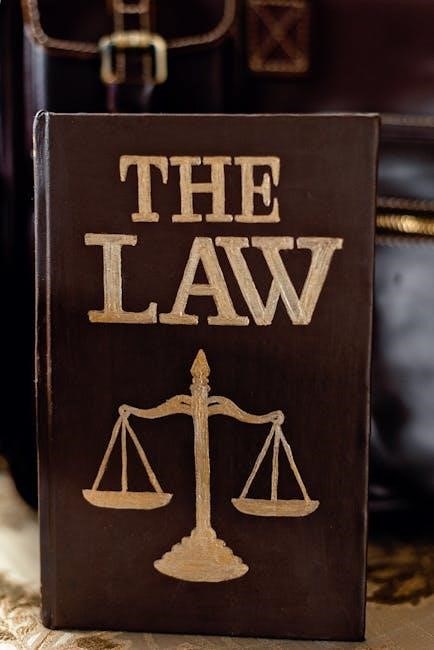The 2023 Pickleball Rule Book, published by USA Pickleball, provides standardized rules for both recreational and competitive play, ensuring fair play and game integrity.

1.1 Overview of the Rule Book
The 2023 Pickleball Rule Book serves as a comprehensive guide for players, officials, and tournaments, outlining standardized rules for fair and enjoyable gameplay. It includes updates, clarifications, and equipment standards, ensuring consistency across all levels of play. The rule book promotes sportsmanship, clarity, and safety, while addressing recreational and competitive settings. Key updates focus on simplifying the game, such as the prohibition of spin serves and refined Non-Volley Zone rules. This edition aligns with international standards, providing a clear framework for players and officials to follow.
1.2 Purpose of the Rule Book
The primary purpose of the 2023 Pickleball Rule Book is to establish consistent and fair guidelines for all levels of play, from casual games to sanctioned tournaments. It ensures clarity and uniformity in rules, promoting sportsmanship and integrity. By addressing equipment standards, serving regulations, and game conduct, the rule book aims to enhance player experience and maintain the sport’s growing popularity. It serves as a unified resource for players, officials, and organizations, fostering a standardized approach to the game globally.
Key Updates in the 2023 Pickleball Rule Book
The 2023 Pickleball Rule Book introduces significant updates, including the prohibition of spin serves, clarified foot position requirements, and refined Non-Volley Zone rules to enhance fair play and clarity.
2.1 Prohibition of Spin Serves
The 2023 Pickleball Rule Book prohibits spin serves to ensure fair play. Players must release the ball with one hand without intentional spin. This rule simplifies the game, reducing disputes and making it more accessible. Spin serves, where the ball is struck with intentional spin, are now considered faults. This change applies to all levels of play, including recreational and tournament games. The prohibition promotes consistency and fairness, aligning with international standards. Referees enforce this rule to maintain the integrity of the serve and ensure a level playing field for all participants.
2.2 Clarified Foot Position Requirements
The 2023 Pickleball Rule Book clarifies foot position requirements during serves. Servers must position both feet behind the right and left service lines. Feet cannot touch or cross these lines until the ball is struck. This rule ensures consistency and fairness, preventing ambiguous calls. Proper foot positioning is essential to maintain the integrity of the serve and avoid faults. Players must adhere to these requirements to ensure smooth gameplay and fair play across all levels of competition. This clarification aligns with the goal of promoting clear expectations for all participants.
2.3 Refined Non-Volley Zone (NVZ) Rules
The 2023 Pickleball Rule Book refines Non-Volley Zone (NVZ) rules to reduce confusion. Players cannot volley the ball within the NVZ, including the lines, on both sides of the net. Violations result in faults, ensuring fair play. The NVZ extends seven feet from the net to the sidelines. Any contact with the NVZ lines while volleying is a fault. These changes maintain game integrity and prevent unfair advantages, promoting consistent enforcement in both recreational and tournament play. Clearer rules enhance player understanding and reduce disputes. Proper adherence is essential for a fair and enjoyable game experience.

Equipment Standards in the 2023 Rule Book
The 2023 Rule Book sets strict standards for paddles, balls, and nets. Paddles must be non-compressible, 24×15 inches, with smooth edges and certification. Balls must have specific holes and weight.
3.1 Paddle Specifications
The 2023 Rule Book outlines strict paddle standards, ensuring fair play. Paddles must be made of non-compressible materials like wood or composite surfaces with a smooth finish. Maximum size is 24×15 inches, with edges smooth and free of holes or protrusions. Surfaces cannot have texturing or features that impart spin beyond normal play. All paddles must pass USA Pickleball’s certification process to be tournament-legal. These standards ensure consistency, fairness, and prevent unfair advantages, maintaining the game’s integrity across all levels of competition.
3.2 Ball Specifications
The 2023 Rule Book sets precise standards for pickleball balls to ensure consistency and fairness. Indoor balls have 26 holes, while outdoor balls have 40 smaller holes for better wind resistance. Balls must weigh between 2;87 and 3.22 ounces and measure 7.75 to 8 inches in diameter. They must bounce between 30 and 34 inches when dropped from 48 inches. Made of durable, non-compressible materials, they must be USA Pickleball-approved. These specifications ensure uniform play and maintain the game’s integrity across all levels of competition.
3.3 Net Requirements
The 2023 Rule Book specifies that pickleball nets must be 36 inches tall in the center and 34 inches at the sidelines, ensuring consistent play. The net must be 20 feet wide, fitting the court dimensions, and made of durable materials. A center strap is required to maintain the net’s shape and height. The net should be securely attached to stable stands to prevent movement during play. These standards ensure safety, fairness, and uniformity across all games, whether recreational or competitive, maintaining the integrity of the sport.

Serving Rules in the 2023 Pickleball Rule Book
The 2023 rule book outlines underhand serves as the only legal method, requiring the paddle to be below the waist. The ball must bounce on both sides of the net after the serve, and players must release the ball with one hand without spinning it. These rules aim to ensure fair play, simplify the serve process, and maintain consistency across all levels of competition, promoting sportsmanship and clear guidelines for players.
4.1 Underhand Serve Requirements
The 2023 Pickleball Rule Book mandates that serves must be made with an underhand motion, with the paddle below the waist. The ball must be struck at or below waist level, and the paddle head must be below the wrist. The serve must be executed with one hand, and the ball must be released without intentional spin; The ball must clear the net and land in the opponent’s court; These requirements ensure fairness, simplify the serve process, and align with international standards, promoting consistency and accessibility for all players. Proper execution is essential for a valid serve.
4.2 Pre-Serve Checks
Pre-serve checks are essential to ensure compliance with pickleball rules. Players must verify the ball is in play, their feet are correctly positioned, and the paddle meets specifications. Visibility checks are also required to ensure the ball’s color does not match clothing or accessories. Referees may conduct inspections to confirm equipment standards. Proper adherence to these checks maintains fair play and order, ensuring the game starts on a level playing field. These steps are critical for a smooth and enjoyable match, promoting integrity and consistency in gameplay.
Non-Volley Zone (NVZ) Rules
The NVZ, or “kitchen,” extends seven feet from the net. Players cannot volley the ball within this zone, including the lines, to ensure fair play and safety.
5.1 Definition and Boundaries of the NVZ
The Non-Volley Zone (NVZ), commonly known as the “kitchen,” is a designated area extending seven feet from the net on both sides of the court. This zone includes the lines marking its boundaries. Players are prohibited from volleying the ball while standing within this area, ensuring a fair and safe gameplay environment. The NVZ applies to all players, regardless of position, and violations result in faults. This rule is strictly enforced to maintain the integrity of the game and prevent unfair advantages near the net.

5.2 Violations and Penalties
Violations of the Non-Volley Zone (NVZ) rules result in a fault, awarding the opposing team a point. Common violations include volleying the ball within the NVZ or touching its boundaries with a body or paddle while volleying. These penalties are strictly enforced to uphold fair play and maintain game integrity. Players must be aware of their positioning to avoid such faults, ensuring adherence to the rules in both recreational and competitive settings.

Scoring System in Pickleball
Pickleball uses a rally scoring system where points are scored by the serving team when the opposing team fails to return the ball. Games are played to 11 points with a two-point advantage rule, ensuring a winner is determined. The scoring system promotes fair and efficient gameplay, balancing competitive intensity with clear winning conditions.
6.1 Rally Scoring System
Pickleball uses a rally scoring system, where points are scored by the serving team when the opposing team fails to return the ball. A game is played to 11 points, with a two-point advantage rule, meaning a team must win by at least two points. If the score reaches 11-10 or higher, the game continues until one team leads by two points. The total game length is capped at 18 points. If time expires without a winner, a sudden-death point is played. This system ensures fair and efficient gameplay, balancing competitive intensity with clear winning conditions.
6.2 Winning Conditions and Game Length
A pickleball game is won by reaching 11 points with a two-point advantage. If the score is tied at 10 or higher, play continues until one team leads by two. The maximum game length is set at 18 points. If time runs out without a winner, a sudden-death point decides the game. This ensures matches are decisive while maintaining fair competition. The 2023 rule book outlines these conditions to provide clear guidelines for players and officials, ensuring consistent and timely game conclusions across all levels of play.

Faults and Lets in Pickleball
A fault occurs when a player fails to make a valid play, such as hitting the ball out of bounds or violating NVZ rules. A let is called when play is interrupted without a fault, like the ball hitting the net but still landing in the court. These distinctions ensure fair play and proper game flow.
7.1 Definition of a Fault
A fault in pickleball occurs when a player or team fails to execute a valid play, resulting in the opposing team scoring a point. Common faults include hitting the ball out of bounds, making contact with the ball beyond the net, or violating Non-Volley Zone (NVZ) rules; Additionally, serving errors, such as improper foot positioning or illegal spin, are considered faults. A fault immediately awards a point to the opposing team and may lead to a loss of serve. Understanding faults is crucial for maintaining fair and consistent gameplay.
- Hitting the ball out of bounds.
- Violating NVZ rules during a volley.
- Illegal serves, including spin serves.

7.2 Definition of a Let
A let in pickleball is called when there is no fault but play must be restarted due to an invalid situation. This occurs when the ball hits the net but still lands in the opponent’s court, or if external interference disrupts play. Unlike a fault, a let does not award a point but allows the point to be replayed. This rule ensures fair play by providing a second chance without penalizing either team. Understanding lets is essential for maintaining the flow and integrity of the game.
- Net interference during a shot.
- External distractions or obstacles.
- Invalid situations requiring a replay.
Tournament-Specific Rules
Tournament-specific rules in the 2023 Pickleball Rule Book ensure fair and organized play in competitive settings, covering seeding, bracket formats, and match scheduling.
8.1 Seeding and Bracket Formats
The 2023 Pickleball Rule Book outlines specific guidelines for seeding and bracket formats in tournaments to ensure fair competition. Seeding is based on player skill levels and rankings to create balanced brackets. Bracket formats vary, including single elimination, double elimination, and round-robin, depending on the tournament size and type. These rules ensure competitive fairness and clear pathways for teams to advance. Proper seeding and bracket organization are essential for maintaining the integrity and enjoyment of competitive play in sanctioned events.
8.2 Match Scheduling and Time Management
The 2023 Pickleball Rule Book establishes clear guidelines for match scheduling and time management to ensure efficient tournament flow. Each match has a default time limit, with a five-minute warm-up period before play begins. Players have 90 seconds between points and 180 seconds between games to prepare. Referees enforce these time rules strictly to maintain pace and fairness. Violations may result in penalties or loss of serve. Proper time management ensures smooth progression of matches and adherence to tournament schedules, enhancing the overall competitive experience for players and spectators alike.
Player Conduct and Etiquette
The 2023 Pickleball Rule Book emphasizes sportsmanship, respect, and fair play. Players must call faults honestly, avoid disruptive behavior, and respect opponents and officials at all times.
9.1 Sportsmanship and Respect
The 2023 Pickleball Rule Book underscores the importance of sportsmanship and respect among players. It mandates that players conduct themselves with honesty, integrity, and courtesy. This includes calling faults accurately, avoiding unsportsmanlike behavior, and treating opponents and officials with respect. The rules prohibit actions like taunting, arguing with officials, or using inappropriate language. These guidelines foster a positive and inclusive environment, ensuring that the game remains enjoyable for everyone involved. Proper etiquette is essential for maintaining the integrity and spirit of pickleball.
9.2 Dress Code and Visibility Requirements
The 2023 Pickleball Rule Book outlines dress code standards to ensure visibility and safety. Players must avoid clothing that matches the ball’s color to maintain visibility. Proper attire, including comfortable footwear, is required for play. The rules prohibit overly casual or inappropriate clothing, promoting a clean and professional appearance. These guidelines apply to both recreational and competitive play, fostering a respectful and fair environment. Non-compliance may result in warnings or requests to change attire, ensuring consistency and sportsmanship across all levels of the game.
Advanced Strategies and Rule Applications
Advanced strategies include effective time-out management, equipment checks, and rule applications to maintain fair play and integrity, enhancing competitive and recreational pickleball experiences effectively.
10.1 Time-Outs and Their Use
Time-outs are crucial for managing game flow and resolving issues. Equipment time-outs address broken paddles or damaged balls, lasting up to 15 minutes. Standard time-outs, typically 60–90 seconds, allow players to resolve disputes or address injuries. Both types ensure minimal disruption and maintain fair play. Proper use of time-outs is essential for a smooth and enjoyable game experience, balancing competitive intensity with sportsmanship and integrity.
10.2 Equipment Failure and Resolution
Equipment failure, such as a broken paddle or damaged ball, must be addressed promptly. Players should notify the referee immediately to halt play. The referee will assess the issue and determine if replacement is needed. All equipment must meet official standards to ensure fair play. If a player cannot replace faulty gear within a reasonable time, penalties or forfeiture may occur. This process ensures minimal disruption and maintains the integrity of the game, aligning with the rule book’s emphasis on fair and sportsmanlike competition.

Downloading the 2023 Pickleball Rule Book
The 2023 Pickleball Rule Book is downloadable as a PDF from the USA Pickleball website. It includes companion guides and resources for easy reference and understanding.
11.1 Availability of the Rule Book
The 2023 Pickleball Rule Book is readily available as a downloadable PDF on the USA Pickleball website. This accessible format ensures players and officials can easily reference the rules. The document includes companion guides and resources to support understanding and implementation. Translations, such as the International Edition, are also provided to cater to a global audience. The rule book is designed to be user-friendly, with clear sections for recreational and tournament play. Downloading the PDF allows quick access to updated rules, ensuring everyone stays informed and aligned with the latest standards.

11.2 Companion Guides and Resources
The 2023 Pickleball Rule Book is supported by companion guides and resources to enhance understanding and implementation. These materials include detailed rule change documents, visual aids, and interpretations to clarify updates. The guides are designed to assist players, officials, and organizers in applying the rules effectively. They are available alongside the rule book on the USA Pickleball website, ensuring easy access for all. These resources are invaluable for both new and experienced participants, helping to maintain consistency and fairness across all levels of play. They complement the rule book perfectly, fostering a deeper understanding of the game.
The 2023 Pickleball Rule Book serves as a comprehensive guide to promote fair, clear, and consistent play. It emphasizes community, sportsmanship, and the integrity of the game. By addressing updates, equipment standards, and player conduct, the rule book ensures a high-quality experience for all participants. Whether for recreational or competitive play, it provides a foundation for pickleball’s continued growth and enjoyment. Familiarizing oneself with these rules is essential for a positive and respectful game environment, fostering the sport’s future success and accessibility for everyone.